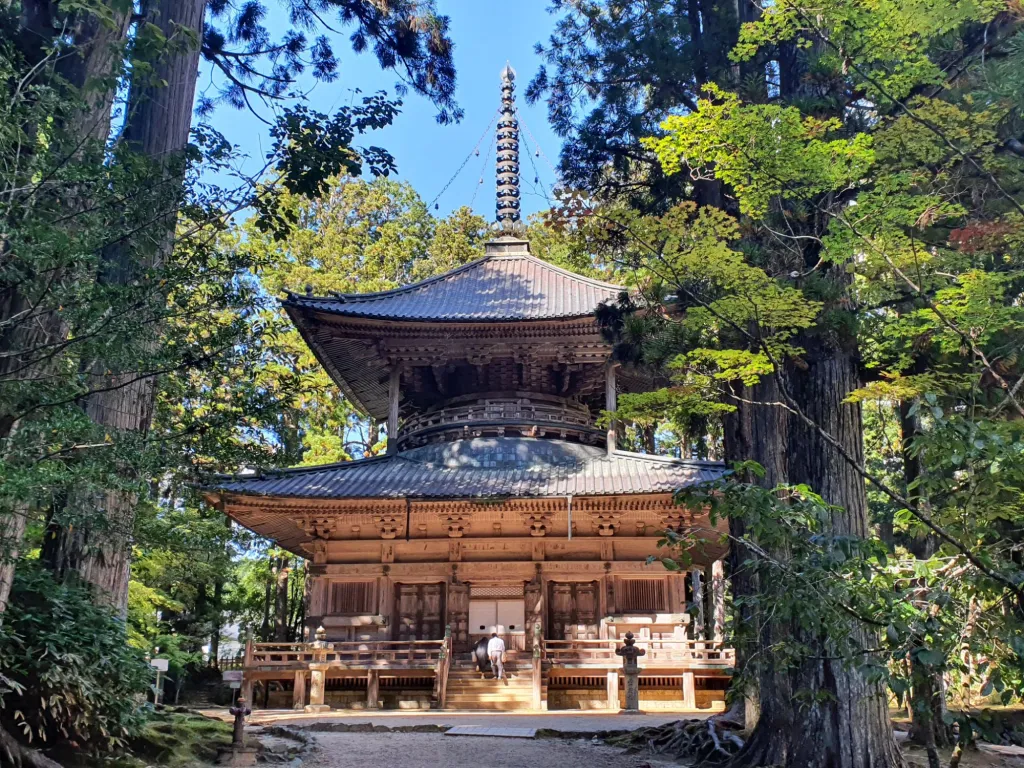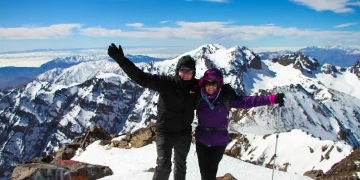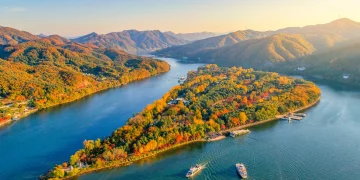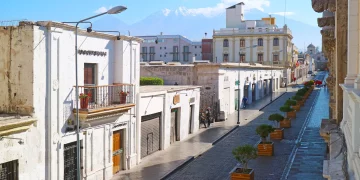The Spiritual Magnetism of Mount Koya
High in the forested mountains of Wakayama Prefecture, Mount Koya—or Koyasan—has emerged as one of Asia’s most transformative destinations for spiritual travelers in 2024. Far beyond a typical tourist experience, Koya offers something deeper: an invitation to pause, reflect, and experience life through the lens of ancient Buddhist teachings. Founded in the 9th century by the revered monk Kobo Daishi (Kukai), this UNESCO World Heritage site is home to over a hundred temples, many of which welcome overnight guests for immersive stays that blend meditation, mindfulness, and monastic life.
Mount Koya’s draw lies not just in its history or architecture, but in the living tradition of Shingon Buddhism practiced by the monks. It’s a rare portal into Japanese spirituality—serene, authentic, and still beating with ritual life. In an era when many travelers seek more than relaxation—looking instead for emotional clarity, purpose, or reconnection—Mount Koya delivers in quiet, powerful ways. Whether it’s the fog that settles over the graveled pathways of Okunoin Cemetery at dawn or the sound of a temple bell echoing through cedar forests, Koyasan resonates with the soul.
Monastery Stays and the Art of Slowing Down
One of the most unique aspects of visiting Mount Koya is the chance to stay in a shukubo, or temple lodging. Over 50 temples offer overnight accommodation, where guests live as the monks do—sleeping on tatami mats, bathing in communal onsens, and waking before sunrise for chanting and meditation. These shukubo are not luxury resorts; they are places of simplicity. There’s no television, no social media distraction, and often limited internet access. Instead, travelers are asked to slow down and observe the rhythms of temple life.
A typical day might begin at 5:30 a.m. with the deep tones of a wooden mokugyo (fish drum) calling guests to the main hall. There, amid incense and candlelight, monks recite sutras in mesmerizing rhythm. For many visitors, this ceremony—repetitive, ethereal, and grounding—becomes a form of internal cleansing. Breakfast follows: a purely vegan meal of rice porridge, pickled vegetables, and seasonal tofu dishes prepared according to Buddhist dietary rules known as shojin ryori. The act of eating becomes meditative too, guided by gratitude and mindfulness.
Solo travelers often find this slow, intentional pace deeply healing. In a world that constantly pushes speed and productivity, Mount Koya allows for surrender—to silence, to introspection, and to something greater than oneself. Some extend their stays beyond a few days, finding in the stillness a new clarity of purpose or emotional reset.
Rituals That Resonate with the Modern Seeker
Beyond the daily structure of temple life, Mount Koya offers spiritual rituals that speak directly to today’s yearning for transformation. One such experience is ajikan meditation, a form of esoteric Shingon practice that focuses on the Sanskrit letter “A” as a symbol of the universe’s ultimate truth. In guided sessions, often held within dimly lit temples, practitioners sit in silence as they visualize the cosmic “A,” breathing slowly and dissolving ego-driven thoughts. Unlike Western mindfulness which emphasizes the breath, ajikan draws from deep tantric roots and is aimed at revealing the essence of reality itself.
Other visitors participate in goma fire rituals, dramatic ceremonies where monks chant mantras while feeding wooden sticks—symbolizing worldly desires—into a blazing altar flame. These purifying rituals are not performances; they are powerful expressions of intention and release. Travelers have described them as cathartic, even emotional, as if watching their burdens burn away in a sacred furnace.
The lantern-lit paths of Okunoin, Japan’s largest cemetery, offer yet another opportunity for reflection. Here lies the mausoleum of Kobo Daishi, who is believed by followers to still be meditating in eternal enlightenment. Visitors often walk the 2-kilometer trail in silence, passing tens of thousands of moss-covered gravestones and wooden memorials. At dawn or dusk, the forest becomes an otherworldly realm—part pilgrimage, part prayer, part poetry.
The Rise of Silent Retreats and Digital Fasting
In 2024, one of the most talked-about trends among spiritual travelers is the rise of silent retreats, or mokusho—a practice gaining traction at several Koya temples. Unlike formal meditation intensives, these retreats offer unstructured silence: no talking, no phone use, and minimal visual distractions. Days are spent in stillness, broken only by meals, gentle walking, or occasional tea ceremonies. The purpose is simple but profound: to listen inward.

For many first-timers, the absence of speech feels uncomfortable at first. But as the days unfold, silence transforms from a void into a space of emotional honesty. One visitor from Germany described their three-day retreat as “a mirror that doesn’t lie,” where hidden anxieties and long-ignored thoughts finally surfaced and softened. Others reported breakthroughs in creative thinking, or a sudden lightness after years of burnout.
Koya’s digital fasting movement—where guests voluntarily hand over their phones at check-in—adds to the detox. With no pings, alerts, or scroll-holes to fall into, the mind begins to recalibrate. Some temples now offer journaling corners or calligraphy sessions as analog forms of expression, encouraging guests to capture their internal landscape in ink rather than pixels. These practices aren’t merely nostalgic—they’re countercultural in the best way, giving travelers permission to reclaim presence.
Temple Dining as a Portal to Mindful Living
The cuisine on Mount Koya is not just nourishment—it’s part of the spiritual practice. Known as shojin ryori, this Buddhist vegan cuisine avoids meat, fish, garlic, and onions, and is designed to promote balance, clarity, and compassion. Ingredients are fresh, seasonal, and sourced locally. Dishes are composed not just for flavor but for energy and symbolism. For example, five colors (green, red, yellow, white, and black) and five methods of cooking (raw, simmered, grilled, steamed, and fried) are used to reflect harmony and completeness.
Travelers are often surprised by the richness and variety of these plant-based meals. A dinner tray may feature sesame tofu (goma dofu), lotus root tempura, stewed daikon, pickled plums, miso soup, and wild mountain vegetables. The food is served in silence, on lacquered trays, with each bite intended to be appreciated slowly. Many leave with a new appreciation for food as a spiritual act—an idea that increasingly appeals to those seeking wellness and sustainability in tandem.
In 2024, with growing interest in plant-based living, Koya’s culinary offerings have gained international recognition. Food bloggers and wellness influencers document their meals with reverence, noting how the flavors seem to reflect the stillness of the mountains. Some temples even offer shojin cooking workshops, allowing guests to carry the philosophy home with them—not just recipes, but a way of seeing food as part of spiritual life.
Stories from the Road: Pilgrims of the Heart
On any given day in Mount Koya, you’ll find an eclectic mix of seekers: retirees navigating life after loss, Gen Z solo backpackers on soul quests, couples reconnecting in shared silence, and mid-career professionals yearning to reset. What binds them isn’t religion per se—it’s intention. Many aren’t Buddhist, but they’re drawn to the sincerity of monastic life and its refusal to entertain pretense.
Some arrive after major life events—a divorce, a burnout, a bereavement—and speak of Koya as a place that held space for their grief without demanding explanation. Others come not out of pain, but out of curiosity, and leave with a new depth of insight they didn’t know they were looking for.
One American teacher described her three-night stay as “a course correction”—not dramatic, but essential. A Brazilian artist spent a week painting mandalas after morning meditation. A retiree from South Korea said his conversations with a monk over tea gave him more peace than any therapy session had. These are not sensational stories, but they are real, and they are happening every day on this sacred mountain.
Why Mount Koya Is More Relevant Than Ever
In 2024, as global uncertainties continue—from climate anxieties to tech burnout to the relentless buzz of modern life—Mount Koya offers an antidote: stillness. In a world awash with content, noise, and hyperstimulation, it reminds travelers that spiritual nourishment still exists in places that ask for nothing but presence.
It is not about escaping the world, but engaging with it differently. The rituals, the silence, the food, the nature—all of it contributes to a slow unraveling of the ego and a reweaving of the soul. And in a time when wellness is being commercialized, Mount Koya remains largely untouched by commodification. It doesn’t market itself loudly. It doesn’t need to. Its sacred energy speaks for itself.
For those seeking more than sightseeing, Mount Koya in 2024 is a call back to essence. A place to remember what it means to be fully here. And for many, that’s exactly what transformation looks like.





















